Each year, vendors’ tents begin to pop up at parks and town greens across Connecticut as outdoor farmers’ markets return. Some markets open as soon as early spring vegetables are available, and all of them are in operation by mid-summer.
Nearly every community in Connecticut is home to at least one farmers’ market, providing a weekly pop-up destination to discover fresh CT Grown fruits, vegetables, meats, honey, and other products. These markets typically run through October, and sometimes carry on year-round with indoor winter markets.
Farmers’ markets are a convenient, inviting option for getting fresh, nutritious, and locally produced food. By using the following tips, you can also make it a very cost-effective experience.
Planning your purchases — and making discoveries
Just like you wouldn’t go to a grocery store without a shopping list, you shouldn’t go to a farmers’ market without a plan. Review the CT Grown crop calendar to see what’s in season, then make a meal plan around the fresh produce you’ll be able to pick up.
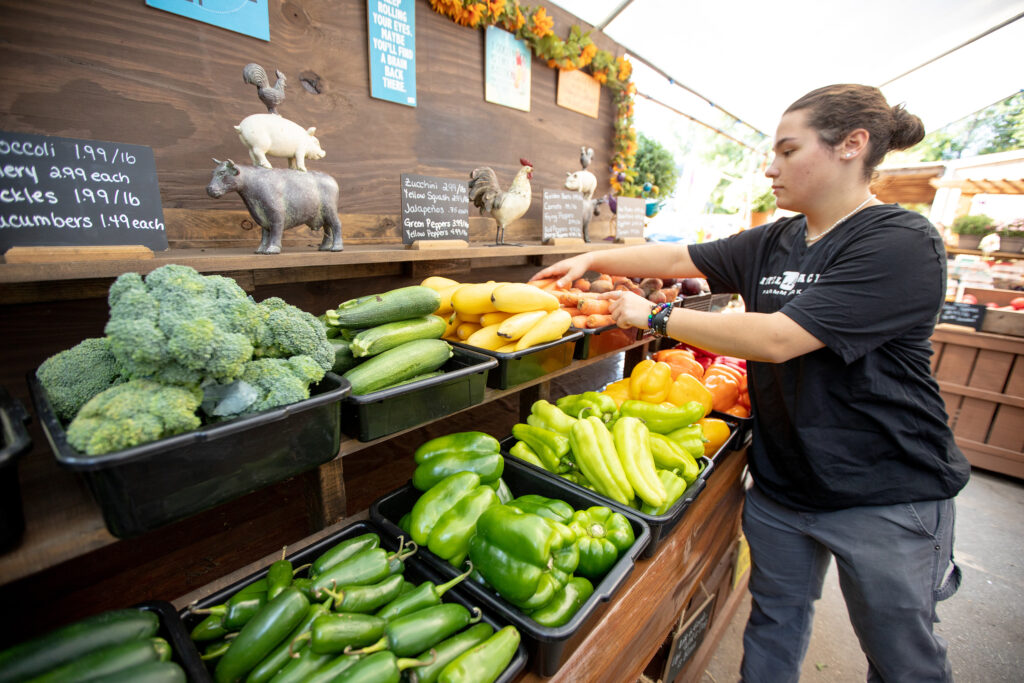
By preparing dishes with seasonal fruits and vegetables, you’ll be able to purchase the freshest possible produce. These fruits and vegetables carry higher levels of nutrients compared to out-of-season foods, which spend more time in transport and storage.
Planning meals with in-season items allows you to pick up most — if not all — of the necessary ingredients at the farmers’ market. However, you should also allow some flexibility in your meal planning in case your preferred produce is not available, or if you find something new you want to try.
Learning from CT Grown farmers

One major benefit of attending a farmers’ market is the ability to talk directly to the farmers who produced the food for sale. They can answer any questions about the items they’re offering and share tips on how fruits and vegetables should be prepared. Some farmers take the extra step of providing recipes that use items available from their farm.
Farmers’ markets often feature unfamiliar fruits and vegetables, or varieties that might not be available in stores. Farmers may offer samples of these goods so you can see if you’re interested in doing a full recipe with them.
Farmers’ markets are also a great place to discover specialty items that you may not realize are produced in Connecticut. Some lesser known CT Grown products include kiwiberries, emu and bison meat, persimmons, chokeberries, horseradish, chicory, and watercress.
How farmers’ markets can save you money
One common misconception about farmers’ markets is that they are considerably more expensive than shopping at the grocery store, making them accessible only to higher income individuals. In fact, several studies have shown that farmers’ market prices are comparable to those at retail locations. Farmers may lower their prices if they have a larger than expected harvest, or if their transportation costs are lower because a market is located close to their farm.
Other ways farmers’ markets can save you money include:
Reduced food waste: Farmers’ markets give you more choice over how much of a particular product you want to buy. Instead of purchasing a large container of tomatoes and watching half of them rot away, you can select a smaller quantity and easily use it up.
Longer lasting produce: Since the food you purchase at the farmers’ market has been harvested recently, it will last longer when stored properly. You can also look for “whole vegetables” — produce that hasn’t been trimmed back to improve its appearance — since they’ll have a longer shelf life.
Bulk purchases: Farmers’ markets offer the option of purchasing bulk quantities of a wide range of CT Grown goods. Farmers can also offer you tips on how to store, can, or freeze produce to keep it from going to waste.
Cash purchases: While smartphone apps are making it easier to accept credit cards, many farmers prefer to limit their farmers’ market transactions to cash only. This allows them to avoid paying a credit card fee, which in turn means the expense is not passed on to you.
Ugly produce: Plenty of fruits and vegetables don’t end up looking glamorous when they’re harvested, but are still perfectly good to eat. Since they’re less presentable, though, farmers are often willing to sell them at a discounted price. They’re also likely to cut prices on very ripe produce, which needs to be used as soon as possible, to keep it from going to waste.
End-of-day discounts: When the farmers’ market starts to wind down for the day, vendors may begin lowering prices to try to sell their last items. However, check the market rules first; some markets have rules prohibiting this practice, and haggling is also discouraged.
Using food assistance at the farmers’ market
The Connecticut Department of Agriculture strongly encourages people who receive Supplemental Nutrition Assistance Program (SNAP) benefits to use them at farmers’ markets. Most markets accept these benefits, allowing them to be used for the purchase of fruits, vegetables, cut herbs, and honey. Some markets help these benefits go even further by doubling benefits for fruit and vegetable purchases.
The Farmers’ Market Nutrition Program (FMNP) is a seasonal benefit allowing recipients to purchase fresh fruits, vegetables, fresh cut herbs, and eggs only at farmers’ markets. Seniors may also use benefits to purchase honey in addition to the other products listed. FMNP is open to all WIC participants as well as seniors over the age of 60 who meet income eligibility requirements.
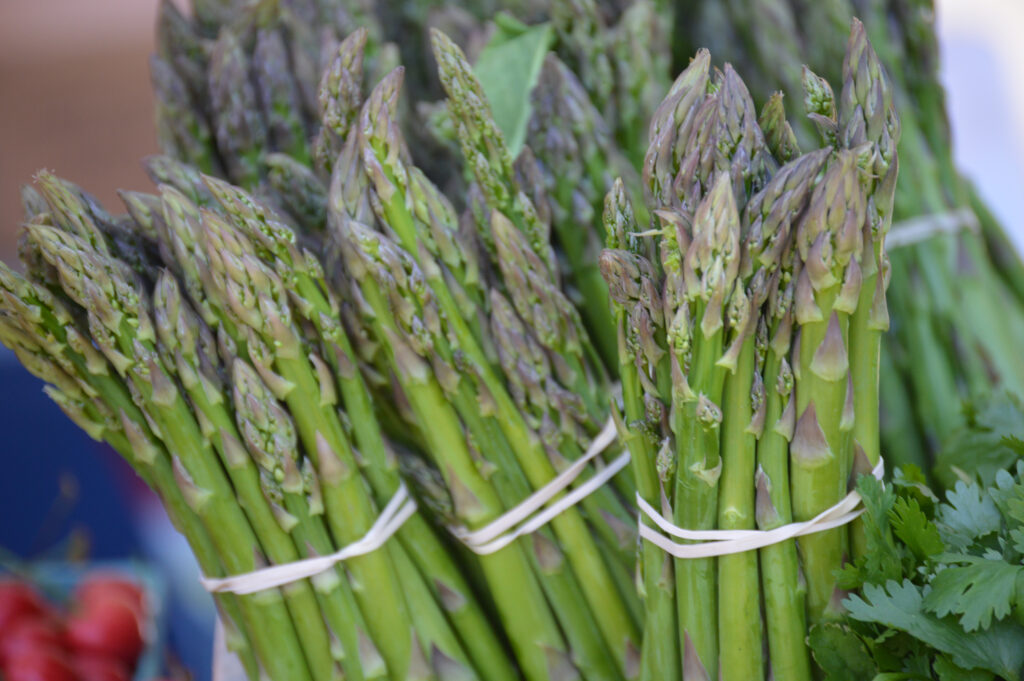
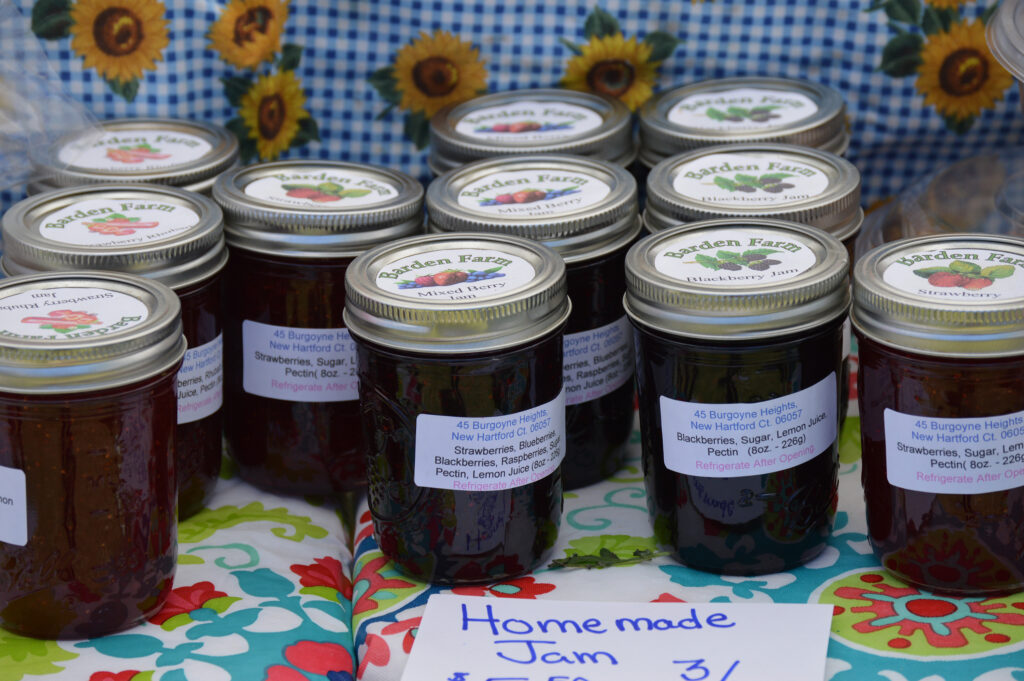
This year, Connecticut is transitioning its FMNP to provide electronic delivery of benefits. This will help make benefits more efficient for all participants and to increase the use of FMNP benefits. Participants can access benefits using a simple mobile app, or continue to use a physical card if they prefer.
To find a market that accepts your benefits, visit Farmers Markets (ct.gov)
Farmers’ markets to check out in Connecticut
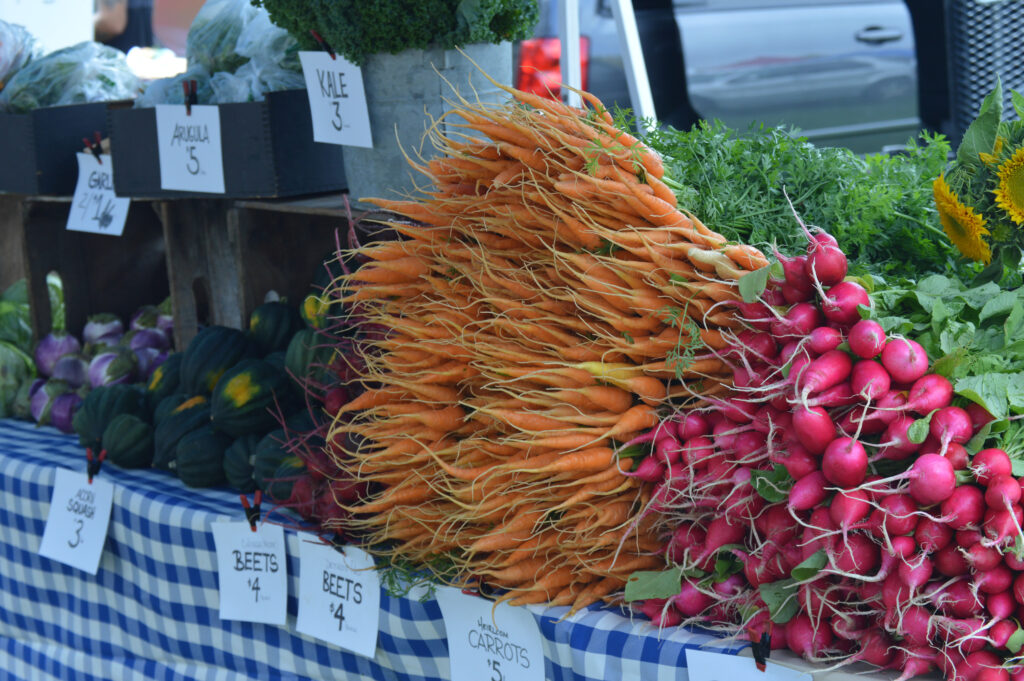
The Bridgeport Farmers Market Collaborative: Set up to help prevent nutrition insecurity in Bridgeport, this collaborative oversees nine farmers’ markets throughout Connecticut’s largest city. In addition to regular benefits, the markets accept vouchers called “Bridgeport Bucks” that are sponsored by local businesses.
Chester Sunday Market: Every Sunday during the summer and fall, Main Street in Chester is transformed into an open air market featuring local farmers and crafters. Organizers also set up a community tent to showcase local organizations and share numerous recipes for visitors to explore.
CitySeed: This organization runs three summer markets throughout New Haven, with a focus on seasonal produce native to Connecticut. More than 50 vendors take part in these markets.
Coventry Farmers Market: One of the largest and best known farmers’ markets in Connecticut, this market is held on the historic Nathan Hale Homestead. The market places a strong emphasis on education, with programs changing each week.
Hartford Regional Market: For early birds only! Running on weekend mornings from 6 to 9 a.m., this market’s vendors concentrate on floriculture products like bedding plants and hanging baskets, but one can also find fruits and vegetables in season and fall products such as pumpkins, gourds, and mums.
Litchfield Hills Farm-Fresh Market: The goal of this farmers’ market is to provide access to local, sustainable food systems. The market regularly features special guests including chefs, artists, musicians, and local nonprofits.
NECT Farmers Market: This organization, which has been active since 1980, organizes four market locations in northeastern Connecticut. Originally focused on providing locally grown fruits and vegetables, the markets’ offerings have expanded to include products like meats, soaps, pickles, and handcrafted items.
Niantic Farmers Market: Each week, this farmers’ market in southeastern Connecticut brings in a set of regular vendors as well as guest vendors. It also features a rotating schedule of food trucks and special activities.
Westport Farmers Market: Paul Newman was one of the founders of this market, and a frequent shopper there as well. The market is also unique in how it supports several programs covering everything from growing your own food to supplying CT Grown ingredients to local schools.
Willimantic Farmers Market: The longest running farmers’ market in Connecticut, this event has been providing fresh local food to the community since 1976. Vendors feature products like fruits, vegetables, and honey as well as specialty items like bakery products.
For more summer farmers’ markets, visit the CT Grown events calendar.
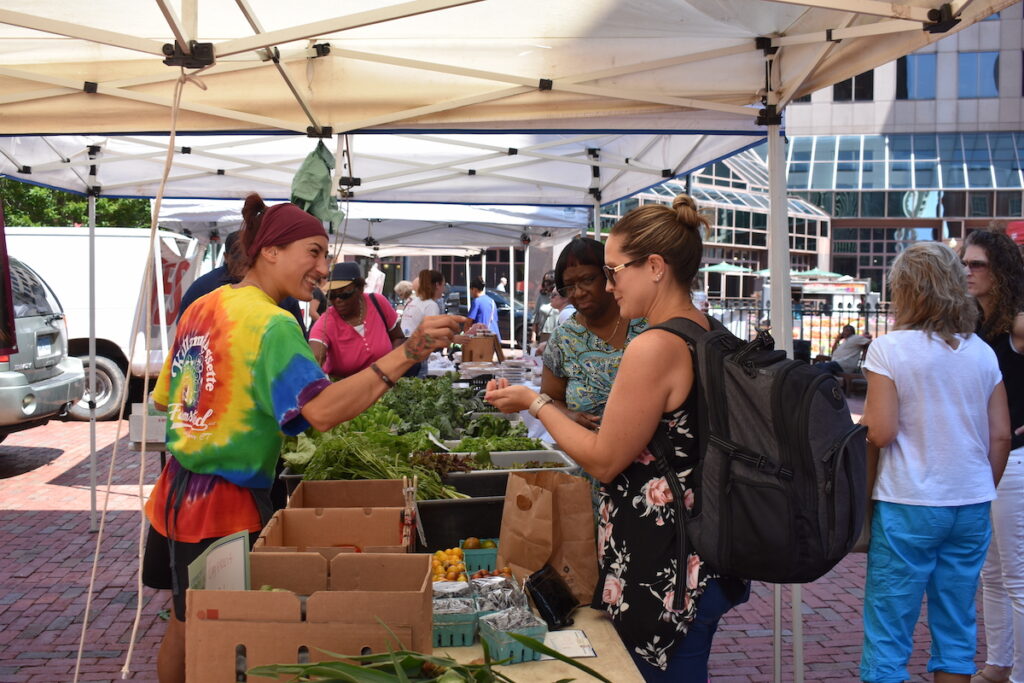
Celebrate Farmers’ Market Week and Support Your Local Farmers
It’s officially National Farmers’ Market Week (Aug. 7-13), the 32nd annual celebration of our farmers and the vital role farmers’ markets play in our food system.
There’s no better time to visit your local farmers’ market — not only to support the farms in your community — but to also enjoy local, fresh and healthy foods and high-quality products available at affordable prices. And with more than 100 certified farmers’ markets and farm stands located throughout Connecticut — you are sure to find a great farmers’ market right in your community.
“Connecticut’s farmers’ markets are a collective effort fostering direct-to-consumer sales, reinforcing the farm to plate connection, and providing a crucial entry point for new and beginning farmers,” said Agriculture Commissioner Bryan P. Hurlburt. “Farmers’ markets fuel local economies and provide increased access to nutritious, fresh CT Grown food for our most vulnerable populations.”
Farmers’ Market Nutrition Program Underway Through November 30
Need another reason to visit your local farmers’ market? Here’s one!
Farmers’ markets offer food nutrition programs — allowing consumers to stretch their food dollars with the purchase of fresh, locally grown farm products while supporting new and beginning farmers, as well as established producers.
The Farmers’ Market Nutrition Program (FMNP), administered by the Connecticut Department of Agriculture, received additional funding through the state legislature for eligible individuals to redeem checks at certified farmers’ markets or farm stands throughout the state. Eligible individuals include seniors over the age of 60 and women, infants, and children (WIC) who meet certain guidelines. Here in Connecticut, eligible WIC and Senior participants can receive up to $32.00 in Farmers’ Market Nutrition Program checks to purchase fresh Connecticut Grown fruits, vegetables, cut herbs, and honey. Newly added to the list of eligible items this year are eggs.
Many farmers’ markets also participate in the Supplemental Nutrition Assistance Program (SNAP) — some even offering double purchasing power. In 2021 alone, over $100 million in federal nutrition benefits were redeemed at farmers’ markets across the nation.
Check Distribution Sites
Find a Senior FMNP check distribution site
Check Redemption Sites
Find Senior FMNP authorized redemption locations
Recipe ideas using products from Connecticut farmers’ markets
Need ideas on how to incorporate CT Grown products into your home-cooked meals? Here are some great recipes that are affordable, easy to make, and of course, delicious! The best part, each of these recipes are centered around ingredients grown by Connecticut farmers, and available at a reasonable price.
Sauteed Green Beans with Garlic (Green Bean Market Price: $4.00/quart | Garlic Market Price: $5/head): Snap into a refreshing and zesty summer side dish with locally grown green beans — in season now!
Greek Stuffed Eggplant (Eggplant Market Price: $4.00/quart): Light, yet filling, Connecticut Grown eggplant is the centerpiece of some great healthy recipes — including this Greek inspired dish that can incorporate several other locally grown products (tomatoes, peppers, feta, etc.).
Kale and Peach Smoothie (Kale Market Price: $3.00/bundle | Peach Market Price: $5.00/quart): Healthy and refreshing, this recipe can be made using several locally grown products. Want to make a special treat? Freeze it and make smoothie popsicles — refreshing on a hot summer day.
A list of all certified farmers’ markets can be found at www.CTGrown.gov/farmersmarkets or visit www.CTGrown.org to access the interactive map to find a farmers’ market or farm stand near you.